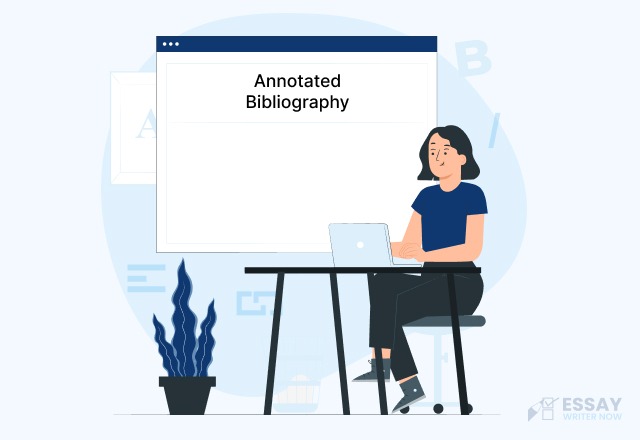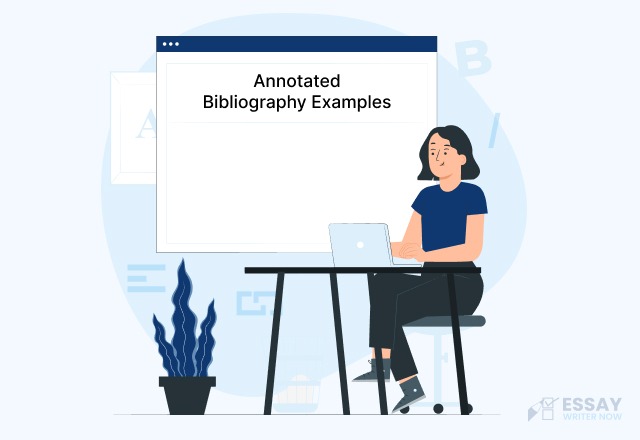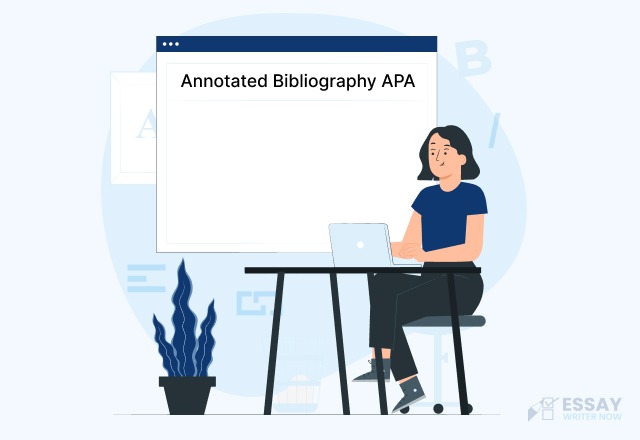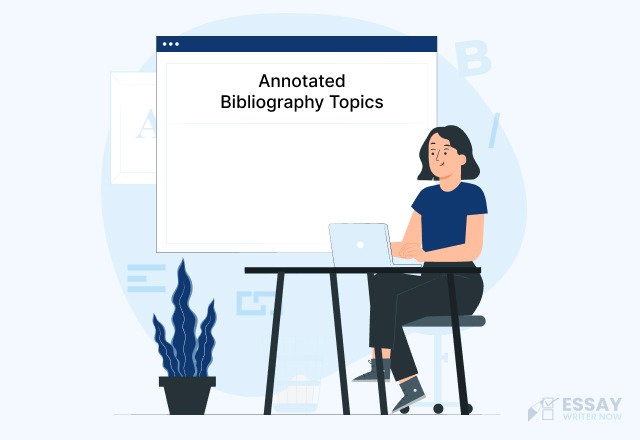What is Annotated Bibliography?
An annotated bibliography is a curated list of sources, such as books, articles, and documents, each accompanied by a brief descriptive and evaluative paragraph known as an annotation. The purpose of an annotated bibliography is to provide a comprehensive overview of the research on a particular topic by summarizing the content and assessing the relevance, accuracy, and quality of each source.
Creating an annotated bibliography involves critical thinking and analysis, as it requires not only summarizing the sources but also evaluating their usefulness and relevance. This process aids in developing a deeper understanding of the research area, identifying gaps in the existing literature, and guiding future research directions.
What Does an Annotation Include?
Annotations typically include a summary of the source's main arguments and findings, an evaluation of its credibility and reliability, and a reflection on how it fits into the broader context of the research topic. This helps researchers, students, and readers understand the significance and contribution of each source to the field of study.
Templates for Different Types of Annotations
Here are templates and examples for four main types of annotations:
Indicative/Descriptive Annotations
Indicative or descriptive annotations focus on summarizing the content of the source without providing a critique. They describe what the source is about, including the main arguments and topics covered.
Definition and Purpose
Indicative annotations offer a brief overview of the source, highlighting the main points without assessing its value or relevance. They are useful for quickly understanding the scope of a source.
Key Components
- Source Information: Title, author, publication date.
- Summary of Content: Main topics or arguments covered.
- Purpose and Scope: What the source aims to achieve.
Example Template
- Source Information: Author(s), Title, Publication Date
- Summary: Briefly describe the content and main arguments of the source.
- Purpose: Outline the purpose and scope of the source.
Sample Annotation
Kapoor, Anirudh. "The Future of AI in Automation." Harvard Business Review, 2019, pp. 15-17. This article examines the potential of artificial intelligence (AI) to revolutionize automation processes in a variety of industries by providing cost savings and improved efficiency. The article discusses the current state of AI in automation, potential applications and implications for the future. |
Informative/Summary Annotations
Informative or summary annotations offer a detailed overview of the source's content, including its main arguments, findings, and conclusions.
Definition and Purpose
Informative annotations provide a comprehensive summary of the source, including its key arguments and conclusions. They are helpful for understanding the main takeaways from a source.
Key Components
- Source Information: Title, author, publication date.
- Summary of Main Arguments: Detailed summary of the key points.
- Conclusions: Main findings or conclusions drawn by the author.
Example Template
- Source Information: Author(s), Title, Publication Date
- Main Arguments: Summarize the key arguments or points made.
- Conclusions: Describe the conclusions or findings of the source.
Sample Annotation
Kapoor, Anirudh. "The Future of AI in Automation." Harvard Business Review, 2019, pp. 15-17. This article offers a comprehensive look at the potential for artificial intelligence (AI) to revolutionize automation processes in a variety of industries. The author examines current applications of AI and makes predictions about its future implications, such as cost savings and improved efficiency. This article provides valuable insight into the potential of AI and its implications for businesses, and is relevant to my research on emerging technologies in automation. |
Evaluative Annotation
Evaluative annotations provide both a summary of the source and a critical assessment of its value, credibility, and relevance.
Definition and Purpose
Evaluative annotations offer a summary of the content along with a critique of the source's credibility, relevance, and contribution to the field. They are useful for assessing the quality and utility of the source.
Key Components
- Source Information: Title, author, publication date.
- Summary: Brief overview of the content.
- Evaluation: Critique of the source's credibility, accuracy, and relevance.
Example Template
- Source Information: Author(s), Title, Publication Date
- Summary: Briefly describe the content.
- Evaluation: Assess the credibility, relevance, and contribution of the source.
Sample Annotation
Kapoor, Anirudh. "The Future of AI in Automation." Harvard Business Review, 2019, pp. 15-17. This article provides a detailed analysis of the potential of artificial intelligence (AI) to revolutionize automation processes. The author's evidence and conclusions are well-supported, making this article an excellent resource for anyone researching emerging technologies in automation. The article offers valuable insight into AI's potential applications, as well as its implications for businesses in the future. This is a must-read for anyone interested in AI and automation. |
Combination Annotations
Combination annotations integrate both summary and evaluation, providing a well-rounded view of the source.
Definition and Purpose
Combination annotations combine a summary of the source's content with a critical assessment. They offer a holistic view, highlighting both what the source is about and its value.
Key Components
- Source Information: Title, author, publication date.
- Summary: Overview of the main points.
- Evaluation: Critical assessment of the source's credibility and relevance.
Example Template
- Source Information: Author(s), Title, Publication Date
- Summary: Summarize the key points and arguments.
- Evaluation: Provide a critique of the source’s reliability, relevance, and contribution to the field.
Sample Annotation
Kapoor, Anirudh. "The Future of AI in Automation." Harvard Business Review, 2019, pp. 15-17. This article examines the potential for artificial intelligence (AI) to revolutionize automation processes in a variety of industries by providing cost savings and improved efficiency. The author discusses current applications of AI and makes predictions about its future implications. An extensive analysis is provided, supported by evidence and clear conclusions. This article is an invaluable resource for anyone researching emerging technologies in automation and provides valuable insight into the potential of AI and its implications for businesses. |
Annotation According to Citation Styles
Annotations are essential in academic writing, especially in research papers, literature reviews, and annotated bibliographies. Different citation styles have specific formats for annotations to ensure consistency and clarity. Here’s how to format annotations in four commonly used citation styles:
APA Style
In APA style, annotations should be concise, around 150-200 words, summarizing the source, evaluating its reliability, and reflecting on its relevance to your research.
Example:
Brown, L. S. (2015). Psychological Theories of Aging. Springer. Brown’s book provides a comprehensive overview of various psychological theories related to aging. It discusses cognitive decline, emotional changes, and social factors affecting older adults. This source is credible due to its thorough research and references to recent studies. It will be useful for my research on mental health in the elderly, offering a solid theoretical foundation. |
MLA Style
MLA style is often used in the humanities. Annotations should summarize the source and its relevance to your research, including a brief evaluation or reflection.
Example:
Smith, John. The Cultural Impact of Social Media. Oxford University Press, 2018. Smith’s book examines the profound effects of social media on contemporary culture. It explores both positive and negative impacts, supported by numerous case studies and statistical analyses. This book is particularly relevant to my research on digital communication, as it provides a balanced perspective and in-depth analysis of current trends and future implications. |
Chicago Style
Chicago style annotations can follow either the notes and bibliography system or the author-date system. Annotations should provide a summary, evaluation, and discussion of the source's relevance.
Example:
Johnson, Mary. History of Modern Europe. New York: Penguin Books, 2010. Johnson’s comprehensive history of modern Europe covers political, economic, and social developments from the Renaissance to the present day. Her analysis is well-supported by primary sources and recent scholarship, making it a reliable resource. This book will be instrumental in my research on European integration, offering historical context and detailed case studies. |
Harvard Style
Harvard style is widely used in the UK and Australia. Annotations should include a summary of the content, an evaluation of its credibility, and its relevance to your research.
Example:
Williams, P., 2012. Climate Change and Global Policy. Cambridge University Press. Williams’s book addresses the global response to climate change, examining policy developments, international agreements, and the role of various stakeholders. The author’s expertise and the book’s extensive references to recent research make it a credible source. This book is crucial for my research on environmental policy, providing a comprehensive overview and critical insights into global strategies for combating climate change. |
Free Annotated Bibliography Templates
Here are some free annotated bibliography templates that you can download:
APA 7th Edition Annotated Bibliography Template
Check out these template examples of APA annotated bibliography:
MLA Format Annotated Bibliography Template
Using this MLA format annotated bibliography template will help you create a comprehensive and well-organized annotated bibliography.
This template will guide you in creating an MLA annotated bibliography that meets its standards .
Chicago Style Annotated Bibliography Template
This template will help you to quickly and easily create an annotated bibliography in the Chicago style.
Critical Annotated Bibliography Template
Lastly, this template can help you to create a Critical annotated bibliography in the Chicago style. This type of annotated bibliography provides a critical assessment of the sources included and is an important part of any academic paper.
Check out this video to learn how to write an annotated bibliography like a professional.
?
In conclusion, incorporating annotated bibliography templates into your research workflow can save time and enhance the quality of your work. These templates offer clear guidelines and examples, helping you create well-organized and accurate bibliographies. By using the provided templates, you can ensure your work meets academic standards and is easy to follow.
Remember, a well-prepared annotated bibliography not only supports your research but also showcases your critical thinking and organizational skills. Start using these templates today and experience a more efficient and effective research process.




